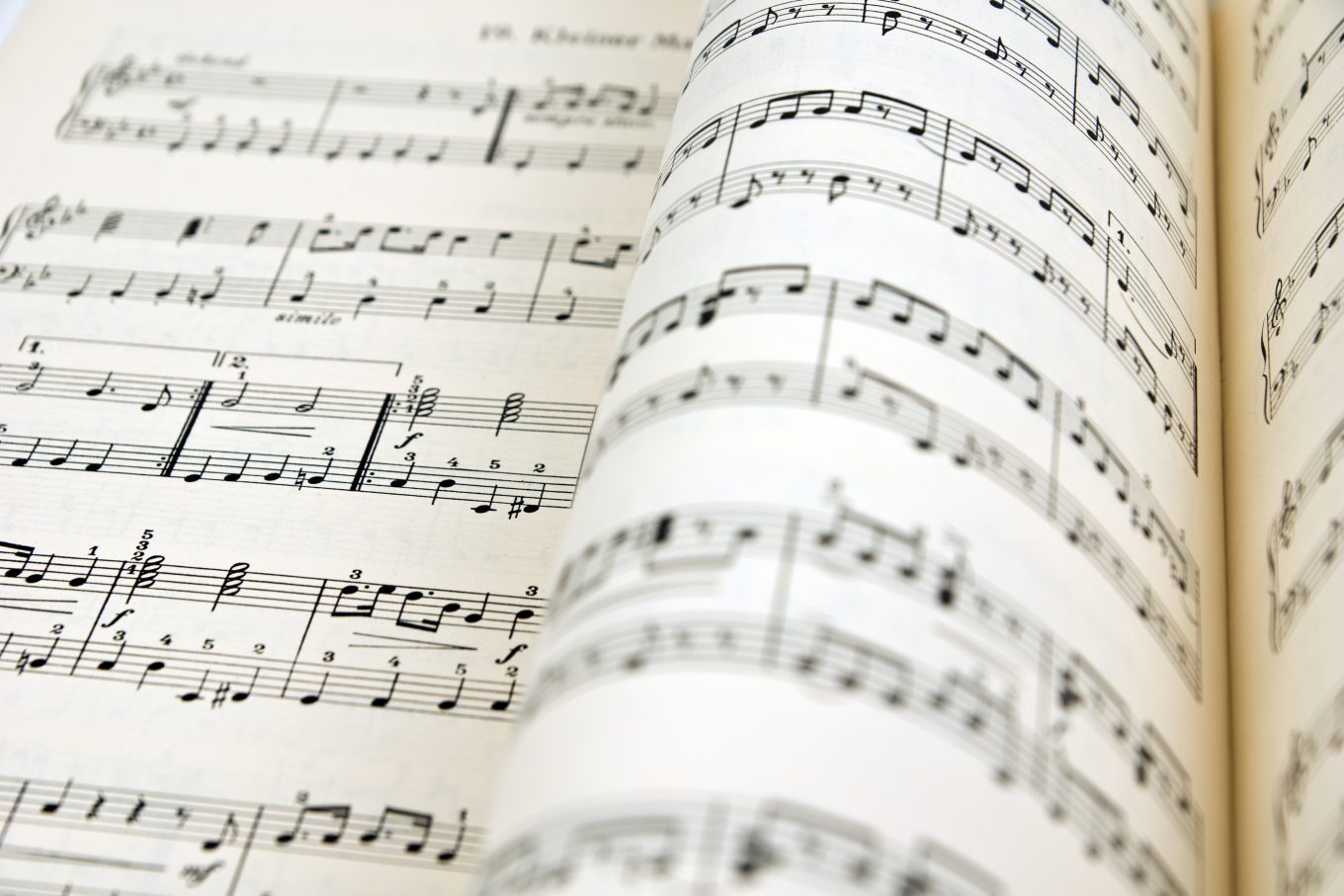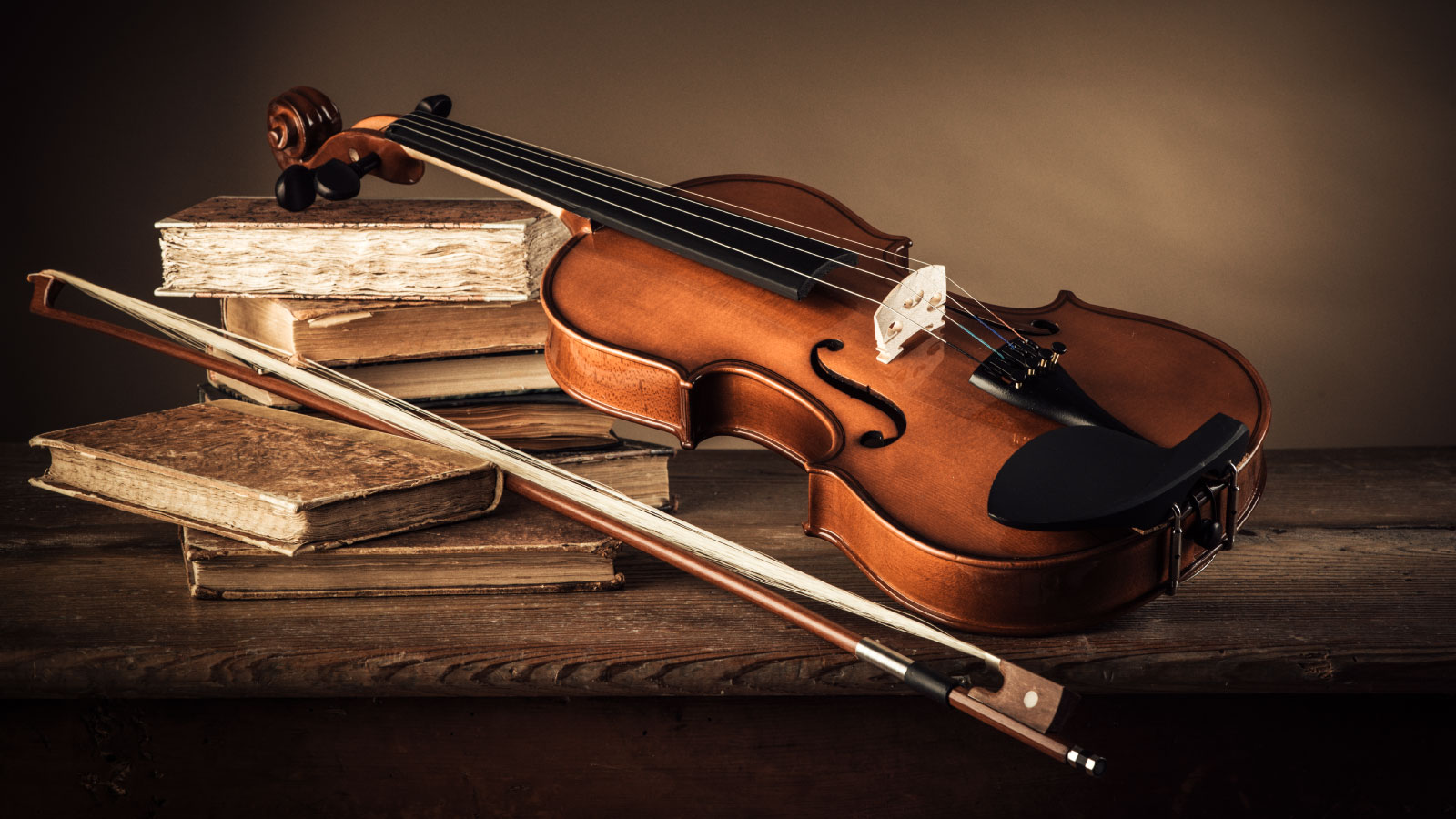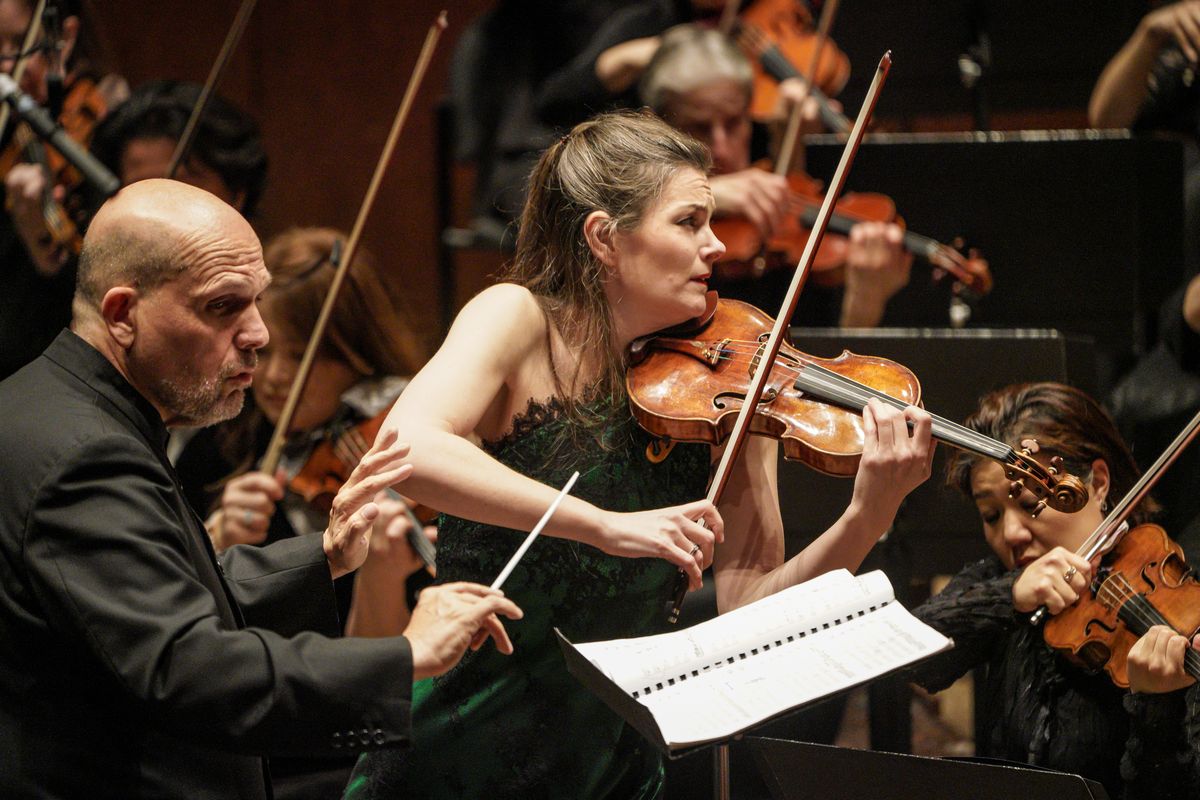Home>Genres>Classical>How To Start Listening To Classical Music


Classical
How To Start Listening To Classical Music
Modified: January 22, 2024
Discover the beauty of Classical music with our beginner's guide. Learn how to start listening to Classical masterpieces and appreciate their timeless melodies.
(Many of the links in this article redirect to a specific reviewed product. Your purchase of these products through affiliate links helps to generate commission for AudioLover.com, at no extra cost. Learn more)
Table of Contents
- Introduction
- Understanding Classical Music
- Finding Classical Music to Listen to
- Exploring Different Composers
- Learning about Musical Periods
- Listening to Orchestral Music
- Discovering Solo Instrumental Pieces
- Exploring Vocal Music
- Understanding Opera
- Attending Live Performances
- Building a Classical Music Library
- Conclusion
Introduction
Welcome to the world of classical music! Whether you’re a music enthusiast looking to expand your horizons or a beginner interested in exploring this rich and vibrant genre, this guide will serve as your roadmap to starting your journey into the world of classical music.
Classical music is a genre that has stood the test of time, captivating listeners for centuries. With its complex compositions and emotional depth, it offers a unique and rewarding musical experience. However, many people find classical music intimidating or inaccessible due to its perceived complexity.
But fear not! This guide will demystify classical music and provide you with the tools to appreciate and enjoy this timeless art form. We’ll cover everything from understanding the different periods of classical music to discovering renowned composers and exploring various musical genres within the classical realm.
Whether you’re interested in orchestral symphonies, solo instrumental pieces, or vocal compositions, there’s something for everyone in classical music. We’ll also delve into the world of opera, a fascinating theatrical art form that combines music, drama, and spectacle.
Additionally, we’ll discuss ways to find and listen to classical music, including attending live performances and building your own classical music library. By the end of this guide, you’ll be equipped with the knowledge and resources to embark on your classical music journey with confidence.
So, let’s dive in and begin our exploration of the enchanting world of classical music!
Understanding Classical Music
Before diving into the vast world of classical music, it’s important to have a basic understanding of its characteristics and structure. Classical music refers to music composed and performed during the Classical period, which spanned from the mid-18th to the early 19th century. However, the term is often used more broadly to encompass music from the Baroque, Renaissance, and Romantic periods as well.
One of the defining features of classical music is its complexity and intricacy. Compositions often feature multiple instruments playing together in harmony, with layers of melodies, harmonies, and rhythms creating a rich and textured sound. Classical music is known for its balance, symmetry, and precise attention to detail.
Another characteristic of classical music is its emphasis on structure. Compositions are typically divided into distinct sections, such as movements or acts, each with its own unique theme and mood. This structured approach allows composers to explore different musical ideas and develop them in a cohesive and meaningful way.
Rhythm and tempo play a crucial role in classical music. Varying tempos, from slow and contemplative to fast and energetic, create a sense of movement and momentum within a composition. This dynamic range of tempos adds depth and emotion to the music.
Melody is another essential element in classical music. Memorable and expressive melodies are often woven throughout a composition, captivating listeners and evoking a range of emotions. These melodies serve as the focal points of a piece, guiding the listener through the musical journey.
Harmony and counterpoint are also fundamental to classical music. Harmony refers to the blending of different musical tones and chords to create a cohesive and pleasing sound. Counterpoint, on the other hand, involves the interplay of multiple melodies or voices, creating a harmonious and complex texture.
By understanding the characteristics of classical music, you’ll be able to appreciate and engage with the intricacies of its compositions. This knowledge will serve as a foundation for your exploration of the diverse range of classical music genres and styles.
Finding Classical Music to Listen to
With the incredible variety of classical music available, finding the right pieces to listen to can feel overwhelming. Here are a few tips to help you navigate and explore the vast world of classical music:
- Streaming Platforms: Streaming services such as Spotify, Apple Music, and YouTube Music offer a wide range of classical music recordings, from iconic symphonies to lesser-known compositions. Use their search functions to find specific composers, genres, or performers, or explore curated playlists and recommendations.
- Online Radio: Online radio platforms like Pandora and iHeartRadio have classical music stations that curate playlists based on your preferences. You can discover new composers and pieces while enjoying the convenience of a pre-selected stream of music.
- Classical Music Websites: There are numerous websites dedicated to classical music that offer information, articles, and recommendations. Websites like Classic FM, Naxos, and AllMusic provide insights into different composers, genres, and recordings, making it easier to find and explore new music.
- Music Apps: Download classical music-specific apps like Idagio, Primephonic, or Classical Archives. These apps provide a comprehensive collection of classical music recordings, along with features like curated playlists, artist biographies, and recommendations based on your preferences.
- Explore Composers: Dive into the works of renowned composers such as Ludwig van Beethoven, Wolfgang Amadeus Mozart, Johann Sebastian Bach, and many others. Start with their most famous compositions and gradually explore lesser-known pieces within their repertoire.
- Genre Exploration: Classical music encompasses various genres and styles, including symphonies, concertos, sonatas, chamber music, and more. Explore different genres to discover your preferences and expand your musical horizons.
Remember, there’s no right or wrong way to explore classical music. Follow your curiosity, listen to a wide variety of compositions, and let your personal taste guide you. The more you explore, the more you’ll discover the breadth and depth of classical music.
Don’t be afraid to step out of your comfort zone and try new things. You may find that you enjoy a genre or composer you hadn’t considered before. The joy of classical music lies in its ability to surprise, inspire, and touch your emotions.
By utilizing the resources available to you and actively seeking out classical music, you’ll gradually build a repertoire of favorite pieces and develop a deeper appreciation for this timeless art form.
Exploring Different Composers
One of the most exciting aspects of classical music is the vast array of composers who have contributed to the genre throughout history. Each composer has their own unique style and voice, offering a diverse range of musical experiences. Here are some ways to explore different composers:
- Famous Composers: Start by delving into the works of renowned composers such as Ludwig van Beethoven, Wolfgang Amadeus Mozart, Johann Sebastian Bach, and Pyotr Ilyich Tchaikovsky. These composers have left an indelible mark on the classical music landscape and have composed some of the most iconic pieces in history.
- Lesser-Known Gems: While the famous composers have rightfully garnered immense recognition, there are numerous talented composers who may be lesser-known but still deserve your attention. Explore the works of composers such as Clara Schumann, Dmitri Shostakovich, Fanny Mendelssohn, and Florence Price, and discover hidden musical treasures.
- Regional Composers: Explore composers from different countries and regions to experience the unique cultural influences on their music. Whether it’s the Russian romanticism of Sergei Rachmaninoff, the Austrian elegance of Franz Joseph Haydn, or the Spanish flair of Manuel de Falla, the diversity of regional composers adds richness to the classical music repertoire.
- Musical Periods: Dive deeper into specific musical periods and explore the composers who defined those eras. From the Baroque mastery of Johann Sebastian Bach and George Frideric Handel to the Romantic brilliance of Frédéric Chopin and Gustav Mahler, each period offers distinct musical styles and compositions to explore.
- Movies and Soundtracks: Many classical composers’ works have been featured in movies and soundtracks, making them more accessible and familiar. Watching films that prominently feature classical music, such as “Amadeus” or “The Pianist,” can introduce you to composers like Mozart or Chopin and create connections between their music and visual storytelling.
- Curated Playlists: Utilize curated playlists on streaming platforms or classical music websites. These playlists often focus on specific composers, themes, or genres, providing a curated selection of their works. This can be a great way to dive deeper into the catalog of a particular composer.
Remember, exploring different composers is a personal journey. Listen to their compositions, learn about their lives and artistic inspirations, and let their music speak to you. By immersing yourself in the works of diverse composers, you’ll gain a deeper understanding of the breadth and depth of classical music.
Keep an open mind and give each composer a fair chance. You may find yourself drawn to certain styles or periods more than others. Embrace the variety and richness that different composers bring, and let their music inspire and captivate you as you continue your musical exploration.
Learning about Musical Periods
To fully appreciate classical music, it’s essential to have an understanding of the different musical periods that have shaped its history. Each period has distinct characteristics, styles, and composers that offer unique perspectives on classical music. Here are the key musical periods to explore:
- Baroque (1600-1750): The Baroque period is known for its intricate and ornamental compositions. Composers like Johann Sebastian Bach, George Frideric Handel, and Antonio Vivaldi were prominent figures during this period. Baroque music features polyphony, elaborate ornamentation, and the use of harpsichord.
- Classical (1750-1820): The Classical period introduced a more refined and balanced style. Composers such as Wolfgang Amadeus Mozart, Ludwig van Beethoven, and Joseph Haydn were key figures in this period. Classical music is characterized by clarity, elegance, and the development of instrumental forms such as the symphony, sonata, and concerto.
- Romantic (1820-1900): The Romantic period was a time of intense emotions and expressive compositions. Composers like Frédéric Chopin, Franz Liszt, and Pyotr Ilyich Tchaikovsky embraced individualism and pushed artistic boundaries. Romantic music is known for its emotional depth, lush orchestration, and programmatic storytelling.
- Impressionist (late 19th-early 20th century): The Impressionist period emerged as a reaction to the rigidity of traditional music. Claude Debussy, Maurice Ravel, and Erik Satie were key figures in this period. Impressionist music focuses on creating an atmosphere through lush harmonies, subtle melodies, and unconventional scales.
- 20th Century and Contemporary: The 20th century brought about a diverse range of styles and experimental approaches. Composers like Igor Stravinsky, Arnold Schoenberg, and John Williams pushed the boundaries of traditional composition. From avant-garde to minimalism to film scores, the music of this period is varied and groundbreaking.
By exploring each musical period, you’ll gain a deeper appreciation for the evolution and progression of classical music. Pay attention to the characteristics, themes, and historical context of each period, as they greatly influence the compositions and styles of the time.
Listening to representative pieces from each period will help you recognize and distinguish the unique elements associated with them. Take note of the instrumentation, harmony, melody, and overall mood of the music. You will start to develop a sense of the stylistic nuances and understand how each period contributes to the broader tapestry of classical music.
Learning about musical periods provides a framework for understanding classical music’s rich history and broad scope of styles. It allows you to delve deeper into specific eras and composers, fostering a deeper connection with the music and an enriched appreciation for the diverse range of classical compositions.
Listening to Orchestral Music
Orchestral music is a cornerstone of classical music, showcasing the power and beauty of a large ensemble of instruments working in harmony. From symphonies to concertos, orchestral compositions offer a rich and immersive listening experience. Here are some tips for exploring orchestral music:
- Famous Symphonies: Start by exploring famous symphonies composed by the likes of Ludwig van Beethoven, Wolfgang Amadeus Mozart, and Antonín Dvořák. These monumental works, such as Beethoven’s Fifth Symphony or Mozart’s Symphony No. 40, demonstrate the grandeur and complexity of orchestral music.
- Concertos: Discover the brilliance of orchestral concertos, where a solo instrument takes the spotlight accompanied by the orchestra. Concertos by composers like Tchaikovsky, Rachmaninoff, and Wolfgang Amadeus Mozart showcase the remarkable interplay between the soloist and the orchestra, allowing both to shine.
- Overture and Suites: Explore overtures and suites, often found in operas or ballets. Composers like Claude Debussy, Pyotr Ilyich Tchaikovsky, and George Gershwin created memorable and vibrant pieces that capture the essence of the stories they accompany.
- Orchestral Tone Poems: Immerse yourself in orchestral tone poems, which depict a specific story or evoke vivid imagery. Richard Strauss’ “Also sprach Zarathustra” and Maurice Ravel’s “Boléro” are renowned examples. These works take listeners on a captivating musical journey through their dramatic and evocative storytelling.
- Live Orchestra Performances: Experience the awe-inspiring impact of live orchestral performances. Attend concerts by your local symphony orchestra or watch performances online. The energy and power of a full orchestra can be truly mesmerizing, providing a unique and immersive musical experience.
- Explore Different Conductors: Different conductors bring their own interpretive styles and nuances to orchestral performances. Listen to recordings by renowned conductors like Herbert von Karajan, Leonard Bernstein, and Gustavo Dudamel to experience different perspectives and interpretations of orchestral pieces.
When listening to orchestral music, pay attention to the various instrumental sections, such as the strings, winds, brass, and percussion. Notice how they interact and contribute to the overall sound of the orchestra. Listen for the building and release of tension, the use of dynamics, and the intricate layers of melodies and harmonies.
Don’t be afraid to explore different compositions and composers within the realm of orchestral music. Each orchestral piece offers a unique listening experience, from soothing and contemplative to exhilarating and grand. Appreciate the craftsmanship and artistry that goes into creating these magnificent works.
By actively engaging with orchestral music, you’ll develop a deeper appreciation for the skill and talent of the composers and musicians. Allow the power and beauty of the orchestra to transport you to new musical landscapes and evoke a wide range of emotions.
Discovering Solo Instrumental Pieces
Solo instrumental pieces in classical music offer a unique and intimate listening experience, allowing individual instruments to take center stage. These compositions highlight the virtuosity and expressiveness of the performers. Here are some ways to discover and enjoy solo instrumental pieces:
- Piano: Explore the world of piano music, which boasts an extensive repertoire of solo compositions. From the delicate nuances of Frédéric Chopin’s Nocturnes to the technical brilliance of Franz Liszt’s Hungarian Rhapsodies, piano pieces allow for the full range of expression and showcase the instrument’s versatility.
- Violin: Delve into the enchanting melodies and intricate bowing techniques of solo violin compositions. Pieces like Johann Sebastian Bach’s Sonatas and Partitas for Solo Violin or Niccolò Paganini’s Caprices display the technical mastery and emotional depth achievable on this captivating string instrument.
- Cello: Immerse yourself in the rich and resonant sounds of solo cello compositions. From Johann Sebastian Bach’s Suites for Solo Cello to Zoltán Kodály’s Sonata for Solo Cello, these pieces demonstrate the expressive capabilities and soulful nature of the cello.
- Guitar: Discover the warmth and versatility of the classical guitar with solo compositions by composers like Francisco Tárrega, Fernando Sor, and Heitor Villa-Lobos. From delicate arpeggios to fiery flamenco-inspired rhythms, the guitar offers a wide range of colors and textures.
- Woodwind and Brass Instruments: Explore solo instrumental pieces for woodwind and brass instruments such as flute, clarinet, trumpet, and saxophone. Composers like Claude Debussy, Carl Maria von Weber, and Alexander Glazunov have composed captivating solos that showcase the unique timbres and technical abilities of these instruments.
When listening to solo instrumental pieces, pay attention to the technical prowess of the performers, the expressiveness of the melodies, and the intricate interplay between the instrument and the composition. Notice the subtleties of phrasing, dynamics, and the use of different techniques that bring out the full expressiveness of the instrument.
Additionally, consider exploring performances by different instrumentalists. Each performer brings their own interpretation and style to a piece, resulting in unique and captivating renditions. Compare different recordings and live performances to gain a deeper appreciation of the versatility and artistry of solo instrumentalists.
Listening to solo instrumental pieces is a chance to appreciate the beauty and power of individual instruments. It allows for a more intimate connection with the music and a focus on the nuances and intricacies of the performance. So, sit back, relax, and let the captivating sounds of solo instrumental pieces transport you to a world of musical beauty and expression.
Exploring Vocal Music
Vocal music is a captivating genre within classical music that combines beautiful melodies with the power of the human voice. From breathtaking arias to majestic choral compositions, vocal music offers a wide range of emotional and expressive experiences. Here are some ways to explore and appreciate vocal music:
- Arias from Operas: Dive into the world of opera by exploring famous arias. Operatic arias, such as “Nessun Dorma” from Puccini’s “Turandot” or Mozart’s “Queen of the Night Aria” from “The Magic Flute,” captivate audiences with the vocal virtuosity, emotional depth, and dramatic storytelling.
- Art Songs: Discover the beauty of art songs, where poetry is set to music. Composers like Franz Schubert, Robert Schumann, and Claude Debussy created exquisite song cycles that showcase the intimate connection between voice and piano, bringing words to life through music.
- Choral Music: Immerse yourself in the powerful and harmonious sound of choral music. From majestic masses and requiems to joyful madrigals and spirituals, choral compositions offer a collective expression of voices coming together in harmony. Explore works by composers like Johann Sebastian Bach, Wolfgang Amadeus Mozart, and Eric Whitacre.
- Oratorio and Cantatas: Journey into the realm of oratorio and cantatas, which combine solo voices, choir, and orchestra. Handel’s “Messiah” and Johann Sebastian Bach’s “St. Matthew Passion” are renowned examples that transport listeners through powerful narratives and musical storytelling.
- Operettas and Musical Theater: Explore the lighter side of vocal music through operettas and musical theater. Composers like Gilbert and Sullivan, Leonard Bernstein, and Andrew Lloyd Webber created engaging and entertaining productions that blend music, drama, and memorable songs.
When listening to vocal music, pay attention to the unique characteristics and qualities of each voice. Notice the range, timbre, and expressiveness of the singers, as they breathe life into the music. Listen for the emotional impact and storytelling conveyed through the lyrics and vocal interpretation.
Consider exploring recordings by different vocalists, as each brings their own style and interpretation to a piece. This can provide diverse perspectives and allow you to discover new nuances and emotional connections within the music.
Vocal music has the remarkable ability to convey a wide range of emotions and tell captivating stories. It takes us on a journey where the human voice becomes an instrument of expression and connection. So, let the power and beauty of vocal music envelop you and transport you to new realms of musical storytelling.
Understanding Opera
Opera is a unique and captivating art form that combines music, theater, and storytelling. With its majestic arias, intricate compositions, and dramatic performances, opera has captured the hearts of audiences for centuries. Here’s a guide to help you understand and appreciate this extraordinary art form:
What is Opera?
Opera is a form of musical theater that typically tells dramatic stories through the fusion of music, singing, acting, and stagecraft. It combines powerful vocal performances with orchestral accompaniment, creating a multisensory experience that transcends traditional theater.
Key Elements of Opera
Opera incorporates a variety of elements to bring stories to life:
- Vocal Performances: In opera, the human voice takes center stage. Solo singers perform powerful arias, duets, and ensembles that convey the emotions and thoughts of the characters.
- Orchestral Accompaniment: Orchestras provide the musical backdrop, enhancing the drama and emotion of the story. The rich textures and soaring melodies of the music serve to heighten the impact of the vocal performances.
- Theatrical Staging: Elaborate sets, costumes, lighting, and stage direction create a visual spectacle. Opera incorporates acting, dance, and visual effects to enhance the storytelling and immerse the audience in the narrative.
- Libretto: The libretto is the opera’s text or script, written in the form of a dramatic and poetic narrative. It guides the storyline, dialogue, and lyrics, often drawing from literary works or original compositions.
Types of Opera
Opera encompasses various genres and styles, each with its own unique characteristics:
- Italian Opera: Known for its melodious arias and passionate storytelling, Italian opera, with composers like Giuseppe Verdi and Giacomo Puccini, is famous for its emotional impact and expressive vocal performances.
- German Opera: German opera, led by composers such as Richard Wagner and Richard Strauss, is characterized by its epic scale, dense orchestration, and intricate storytelling.
- French Opera: French opera, exemplified by composers like Georges Bizet and Jules Massenet, combines lyrical melodies, poetic librettos, and elegant vocal performances with elements of French culture and sophistication.
- Comic Opera: Also known as opera buffa or operetta, comic opera aims to entertain with humorous, lighthearted stories and catchy melodies. Composers like Wolfgang Amadeus Mozart and Jacques Offenbach excelled in this genre.
Experiencing Opera
To fully experience opera, consider attending live performances or exploring recordings. Allow yourself to be immersed in the spectacle and emotion of the production. Familiarize yourself with the opera’s storyline and characters beforehand, so you can follow the narrative more easily.
Additionally, take advantage of opera subtitles, which provide translations of the libretto in real-time during performances. This allows you to understand the lyrics and follow the nuances of the story as it unfolds.
Opera is a powerful and emotional art form that transports audiences to different times and places. It combines the best of music, theater, and storytelling, evoking a range of emotions and leaving a lasting impact. So, sit back, let the melodies and drama captivate you, and immerse yourself in the grandeur and magic of opera.
Attending Live Performances
Attending live classical music performances is a thrilling and enriching experience that allows you to fully immerse yourself in the beauty and power of the music. Whether it’s a symphony orchestra, opera production, or solo recital, here are some reasons why attending live performances is so special:
Emotional Connection:
Live performances create a direct and intimate connection between the performers and the audience. Being in the same physical space as the musicians adds an element of authenticity and immediacy to the experience. The energy, passion, and emotion of the performers can be felt throughout the concert hall, creating a shared and transcendental experience.
Sensory Experience:
Live classical music performances engage all your senses. You not only hear the music, but also see the performers, their expressions, and the intricate movements of the conductor and musicians. The visual aspects, combined with the acoustics of the concert hall, amplify the impact of the music, enhancing the overall experience.
Artistic Interpretation:
Each live performance is unique, offering distinct interpretations and nuances brought forth by the performers. Musicians have the freedom to bring their individuality, skill, and artistic choices to the music, allowing for fresh perspectives and unexpected moments of brilliance. Attending live performances allows you to witness the creative process unfolding in real-time.
Community and Connection:
Live performances bring together a community of music lovers, creating a shared sense of appreciation and joy. The atmosphere of a concert hall or opera house is buzzing with anticipation and excitement. Engaging with like-minded individuals who share a love for classical music can foster connections and conversations with fellow audience members.
Discovering New Music:
Live performances often feature a mix of well-known repertoire and lesser-known gems. Attending concerts allows you to discover new compositions, unfamiliar composers, and emerging performers. You may be pleasantly surprised by the hidden treasures you encounter and expand your musical horizons.
Supporting the Arts:
By attending live performances, you directly support the classical music community and contribute to its vitality. Your ticket purchases help sustain orchestras, opera companies, and concert venues, enabling them to continue bringing world-class performances to audiences. Your presence in the concert hall shows appreciation for the dedication and craftsmanship of the musicians and encourages the continuation of this timeless art form.
Whether it’s the grandeur of a symphony performance, the drama of an opera, or the intimate setting of a solo recital, attending live classical music performances is a transformative experience that can ignite your passion for music and leave a lasting impact. So, embrace the opportunity to witness the magic of live performances and discover the power of music in its purest form.
Building a Classical Music Library
Building a classical music library is a rewarding endeavor that allows you to curate a collection of timeless compositions and performances. Whether you prefer physical albums or digital downloads, here are some tips to help you create a robust and diverse classical music library:
Exploring Essential Repertoire:
Start by including the essential works and renowned compositions in your collection. These are the pieces that have withstood the test of time and are widely regarded as masterpieces. Consider including symphonies by Beethoven and Mozart, concertos by Bach and Tchaikovsky, as well as opera highlights from composers such as Verdi and Puccini. These works provide a solid foundation for any classical music library.
Composer Catalogs:
Expand your collection by exploring the catalog of individual composers. Focus on renowned figures like Bach, Mozart, and Chopin, and gradually delve into the works of lesser-known composers. Consider acquiring complete collections or box sets to dive deep into the complete repertoire of specific composers or musical eras.
Variety of Genres and Styles:
Diversify your classical music library by including a variety of genres and styles. From orchestral symphonies and solo instrumental pieces to choral works and chamber music, there is an array of musical styles to explore. Incorporate different periods, from Renaissance and Baroque to Romantic and contemporary compositions, to have a well-rounded collection.
Discovering New Recordings:
Keep an eye out for new and fresh interpretations of classical music. Artists and ensembles often release new recordings of familiar works with their unique artistic perspectives. Exploring these new recordings can provide fresh insights and introduce you to new performances that resonate with your musical taste.
Live Recordings and Concerts:
Consider including live recordings of classical music performances in your library. These recordings capture the energy and spontaneity of live concerts, offering a unique perspective on familiar compositions. Attending concerts and adding recordings of live performances can enhance your collection and provide a sense of authenticity.
Recommendations and Reviews:
Seek recommendations and read reviews from classical music experts, musicians, and trusted sources. Their insights can guide you towards lesser-known compositions, exceptional interpretations, and underrated performances, enriching your collection with hidden gems that may escape mainstream attention.
Digital Streaming and Downloads:
Explore digital platforms that offer classical music streaming or downloads. Services like Spotify, Apple Music, and Primephonic provide extensive catalogs and curated playlists. While physical albums offer a tangible experience, digital options provide convenience and access to a vast library of classical music.
Remember that building a classical music library is a personal journey. Select pieces and recordings that resonate with you and reflect your musical preferences and interests. Allow your collection to evolve over time as you continue to discover new compositions and interpretations that captivate your musical sensibilities.
Building a comprehensive classical music library is an ongoing process that enhances your appreciation for the rich and diverse world of classical music. Embrace the joy of collecting and curating your own unique collection, and let your library become a source of inspiration and musical enchantment.
Conclusion
Embarking on a journey into the world of classical music is a rich and rewarding endeavor. Through this guide, we have explored various aspects of classical music, from understanding its characteristics and structure to discovering composers, musical periods, and different genres.
By learning about classical music and its diverse repertoire, you have gained the tools to appreciate and engage with this timeless art form. Whether you’re captivated by the grandeur of orchestral symphonies, the intimacy of solo instrumental pieces, the emotional depth of vocal compositions, or the drama of opera, there is something for everyone in the vast realm of classical music.
Attending live performances and building your own classical music library allow you to immerse yourself in the beauty and power of the music. The experience of witnessing talented musicians bring compositions to life, or sitting at home and exploring your carefully curated collection, provides a profound sense of connection and appreciation for the artistry and creativity of classical music.
Remember to approach classical music with an open mind and curiosity. Embrace the opportunity to explore new composers, genres, and interpretations. Let the music take you on an emotional journey, inspiring and captivating your senses.
Whether you’re just beginning your classical music exploration or have been a lifelong enthusiast, this guide has served as a roadmap to help you navigate the vast and intricate world of classical music. Continue to seek out new compositions, attend live performances, and build a collection that reflects your personal tastes and interests.
Classical music has the power to transport, uplift, and touch the soul. So, let the melodies, harmonies, and narratives of this timeless genre enrich your life, broaden your musical horizons, and deepen your appreciation for the art of classical music.











